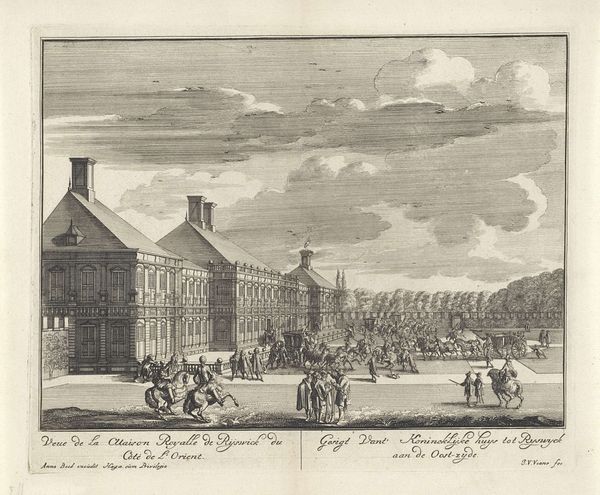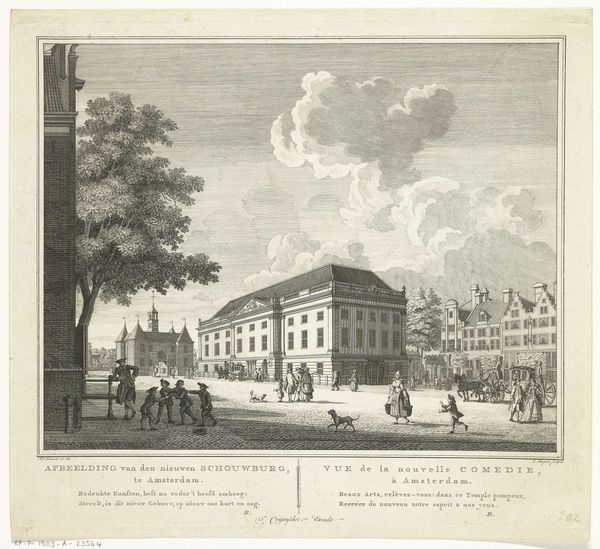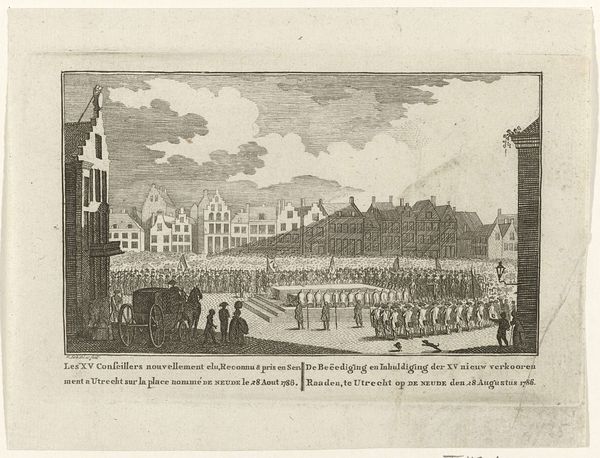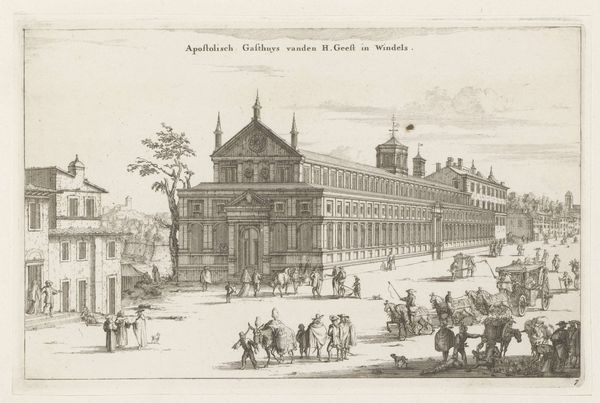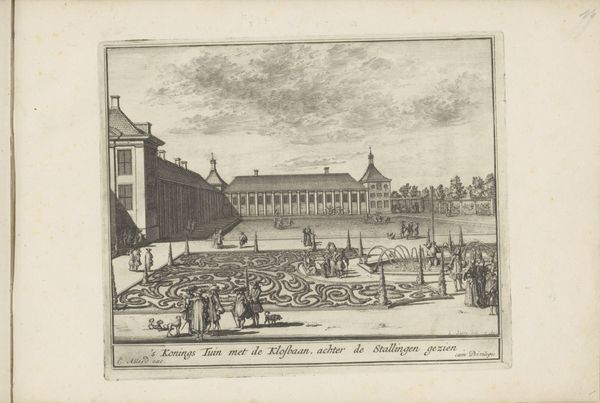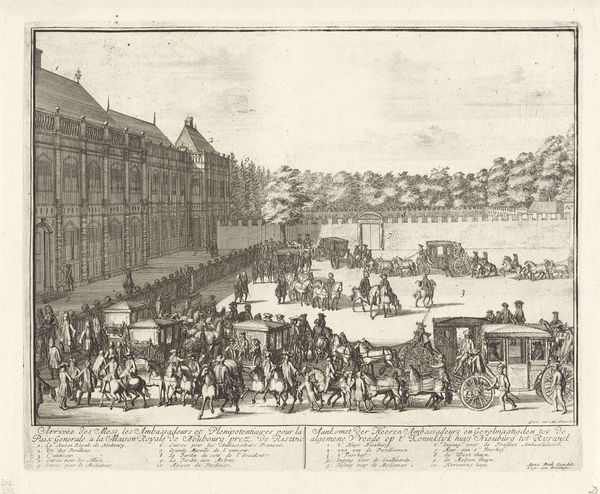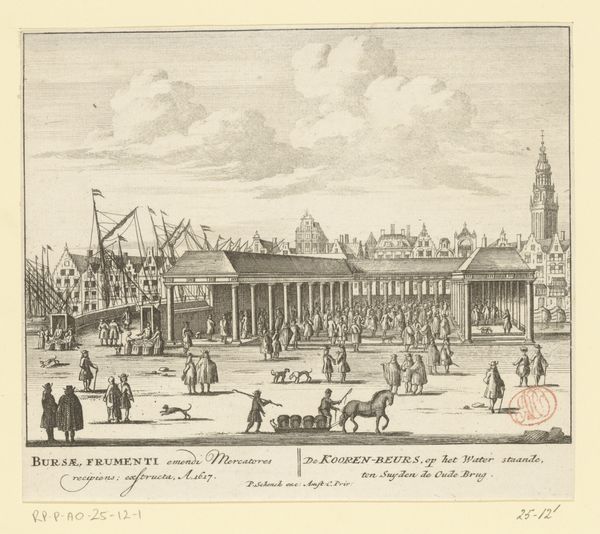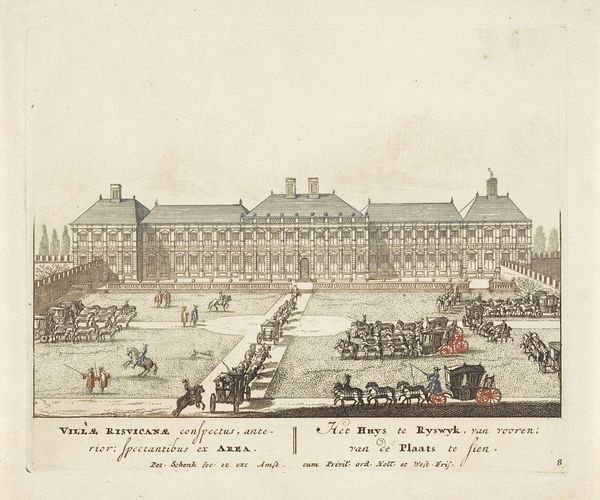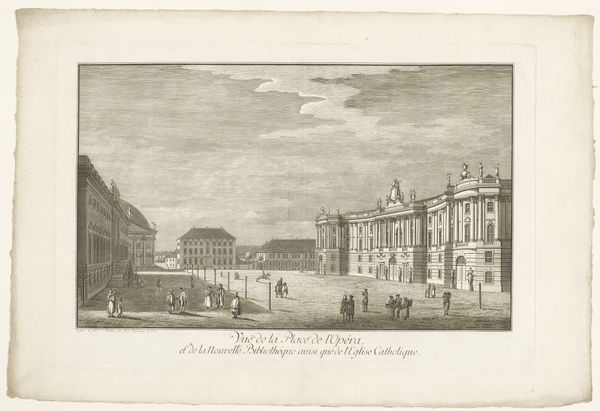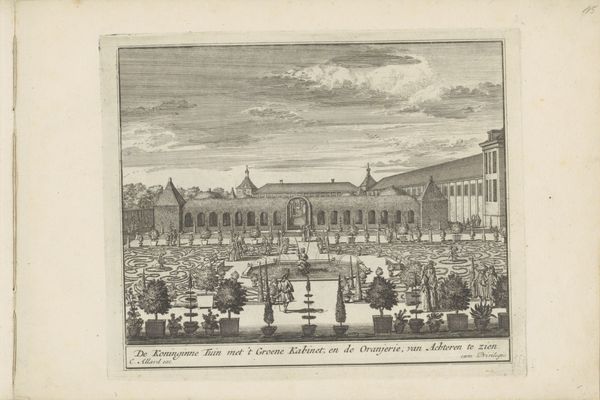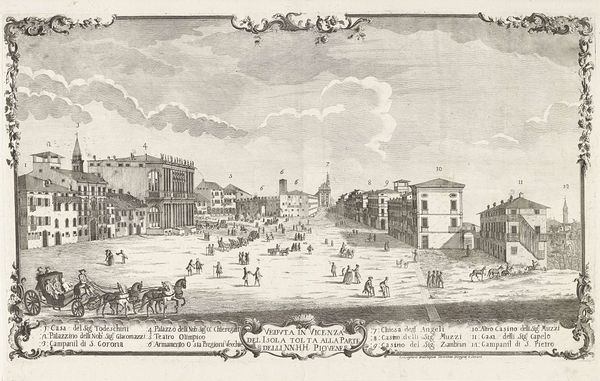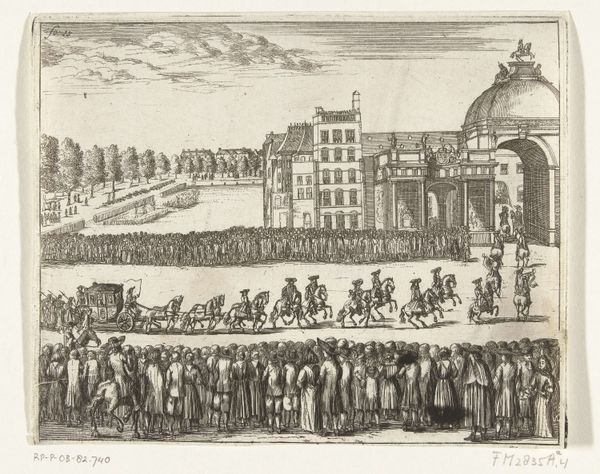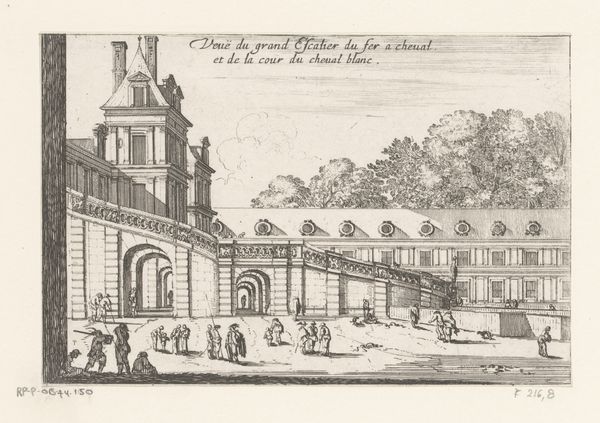
engraving
#
baroque
#
dutch-golden-age
#
landscape
#
cityscape
#
engraving
Dimensions: height 136 mm, width 157 mm
Copyright: Rijks Museum: Open Domain
Curator: Look at the detail in this print; you can see "View of Huis ter Nieuburch in Rijswijk" created by Jan van Vianen in 1697. Editor: It has such a regimented formality, doesn't it? A monumental building taking center stage and full of figures, it immediately conveys power and a bit of an ominous mood to me. Curator: Indeed. Jan van Vianen made it as an engraving, it represents much more than just architecture, think of Dutch Golden Age values with colonial intersection of power; also this country estate in Rijswijk where the Treaty of Rijswijk was signed, marking a turning point in European political power structures. The formal gardens would be further reinforcement of that power on display, a demonstration of mastery of both people and land. Editor: That makes sense given the subject. It looks very costly to build something of this scale and level of grandeur, so yes the political history must certainly be highlighted given how social dynamics played out during this time period as well and to what end for these colonizers to enjoy such leisurely lifestyles. Can we also talk about the material qualities that engraving offers? Curator: Most certainly! How the technique lends itself to these political assertions is certainly part of the dialogue as well. Engraving like this was skilled manual labor. I understand your impulse to investigate the labor behind creating something so impressive in this view, too. The detailed work celebrates material creation during the Baroque. Editor: Absolutely! Each precise line, each calculated mark serves a purpose. Thinking about this painstaking process enriches the historical context. These details show how materials and labor are tied to the overall impression of political stability and societal power, it really brings into view the social underpinnings for displays of such magnitude to viewers in their context. Curator: I agree! Exploring this print, from its materials and its relationship with political identity and race in a moment in Dutch history helps me connect the work's production with the broader issues in a deeper, intersectional way. Editor: Me too. Considering materiality gives insight into society and even helps reveal undercurrents, shifting relationships of consumption, production, and what such luxury entailed at this pivotal turning point in sociopolitical history.
Comments
No comments
Be the first to comment and join the conversation on the ultimate creative platform.
